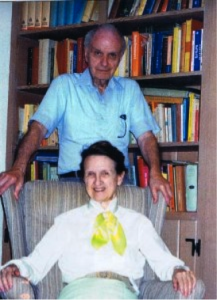 American Vedantist remembers with gratitude the service Beatrice Bruteau rendered as co-editor and contributor from the journal’s inception in 1995 until 2007. Beatrice was one of the most significant spiritual philosophers of our time. She passed away on November 16.
American Vedantist remembers with gratitude the service Beatrice Bruteau rendered as co-editor and contributor from the journal’s inception in 1995 until 2007. Beatrice was one of the most significant spiritual philosophers of our time. She passed away on November 16.
Tribute by Cynthia Bourgeault
[Republished by permission of the author. Rev. Dr. Cynthia Bourgeault is an internationally acclaimed teacher, writer and practitioner of Christian contemplative prayer. An Episcopal priest, she divides her time between her seaside hermitage in Maine and a busy global teaching schedule. She is a member of Global Peace Initiative for Women and is Principal Teacher and Advisor for The Contemplative Society, based in Vancouver, Canada.]
Beatrice Bruteau—scholar, teacher, interspiritual pioneer, and intrepid explorer of the evolutionary edge of consciousness—quietly departed this earth plane on November 16, 2014, at the age of 84. Her passing exemplified her signature brand of clarity, freedom, and intentionality: traits which for more than five decades have been the hallmarks of her teaching presence among us and which she now bequeaths to us as both a legacy and a continuing invitation.
Mention the name Beatrice Bruteau, and I daresay that most Christian contemplatives will never have heard of her. She never aspired to or attained the “superstar” status of a Thomas Merton, Thomas Keating, Bede Griffiths, or David Steindl-Rast. By her own choice she preferred to remain slightly below the radar screen, where she exerted her quiet presence as one of the most powerful shaping influences on contemporary mystical theology, interspirituality, and contemplative practice. In her lifetime she was a friend, colleague, and mentor to all the people mentioned above (and dozens more of comparable stature), and a teacher to thousands of appreciative students, myself included. Those who had the privilege of working with her directly speak of the clarity and precision of her mind, the luminosity of her vision, and the down-to-earth practicality of her contemplative practice.
Rigorously trained, she held two degrees in mathematics and a doctorate in philosophy from Fordham University (the first woman to be admitted to the graduate program there.) In addition to her highly articulate Christianity, she was also a longtime student of Vedanta and one of the early pioneers of East-West dialogue. She wrote books on Aurobindo and Teilhard de Chardin, and was one of the founders of the American Teilhard Association in 1967. Her most important works include Radical Optimism (1993), The Easter Mysteries (1995), What We Can Learn from the East (1995), and God’s Ecstasy: The Creation of a Self-Creating World (1997). In all of these works she brought her deep understanding of non-dual states of consciousness (as well as her scientific training and rigor) to the mysticism of the West. Her passion was the study of evolutionary consciousness, and over the course of her long teaching career she lived to see this passion come into its own as one of the most significant spiritual movements of our times. In particular, her influence on two fellow Fordham graduates, Ewart Cousins and Ilia Delio, has revolutionized the playing field upon which the venerable intellectual tradition of Christian Humanism is now unfolding.
Despite these stellar academic credentials, Beatrice chose to “think globally, act locally.” For most of her long career she lived in and around Winston-Salem, North Carolina, where she and her husband, Fordham professor James Somerville, founded the Schola Contemplationis, a center for the study and practice of the contemplative lifestyle according to the classical traditions of both East and West. For more than thirty years, their “mind-bending” monthly newsletter, The Roll, was painstakingly composed in their home office, run off on an old mimeograph machine, and hand-mailed to their small but devoted mailing list. A Southern lady “to the nines,” she dressed impeccably for every occasion, refused to travel by air, and insisted that coffee and tea be served in proper china cups—not, heaven forbid, mugs!
Joshua, Cynthia, and Beatrice
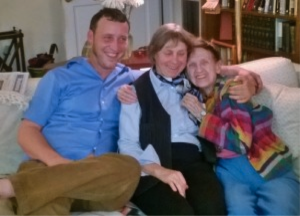 My own relationship with Beatrice Bruteau began in the late 1980s when I discovered her three-part article, “Prayer and Identity” in the now-defunct Contemplative Review and had my spiritual universe quietly but completely overturned. Correspondence soon led to a personal visit and a mentoring relationship that would span the next three decades. I am honored to report that the very first public spiritual teaching I ever gave was at her behest, to her Schola Contemplationis group, in the early 1990s. In 2007, I was able in a small way to repay that tremendous debt of gratitude when the Sewanee Theological Review invited me to republish her original “Prayer and Identity” article, together with a short commentary, in an issue dedicated to “Spirituality, Contemplation, and Transformation.”
My own relationship with Beatrice Bruteau began in the late 1980s when I discovered her three-part article, “Prayer and Identity” in the now-defunct Contemplative Review and had my spiritual universe quietly but completely overturned. Correspondence soon led to a personal visit and a mentoring relationship that would span the next three decades. I am honored to report that the very first public spiritual teaching I ever gave was at her behest, to her Schola Contemplationis group, in the early 1990s. In 2007, I was able in a small way to repay that tremendous debt of gratitude when the Sewanee Theological Review invited me to republish her original “Prayer and Identity” article, together with a short commentary, in an issue dedicated to “Spirituality, Contemplation, and Transformation.”
On a very personal note, the most powerful debt of gratitude I owe her was her unflagging support during the writing and publication of my first book, Love is Stronger than Death. Still in a very tender place following the death of my hermit teacher Raphael Robin, not fully trusting whether my spiritual intuitions of an ongoing journey between us were on target or simply a concocted fantasy, I shared the manuscript with her, and in a powerful way she offered validation and the encouragement to continue. Her luminous support at this critical threshold of my life is one of the main reasons that I am where I am today.
During this past decade our connection grew a bit more tenuous as my life got busier and hers gradually became more concentrated around that final stage of the journey, “growing into age.” In about the fall of 2013 I began to hear rumors that Alzheimer’s was starting to affect her magnificent brain, and in spring 2014, following a conference in Greensboro, I was able to pay her what turned out to be a final visit. While it was indeed obvious that the disease was making some inroads on the habitual operations along the horizontal axis of life, as soon as we leaped into spiritual issues, her vast mind still took over like the lioness it was. Her teaching continued luminous and more and more vast.
Beatrice and Joshua
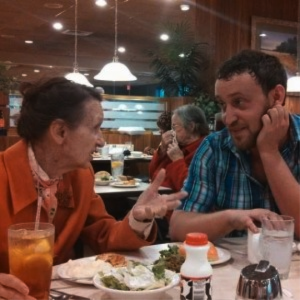 Little did any of us at the time—maybe even Beatrice—suspect the final surprising denouement with which she would make her exit from this life. As it so happened, one of my younger students, Joshua Tysinger, had begun his seminary studies at Wake Forest, right there in Winston-Salem, just about the time that Beatrice’s life was rounding toward its end. I suggested—and Josh was alert enough to follow up on the suggestion—that having a world-class spiritual master right in town was an opportunity not to be missed. He began to pay her regular visits, and it soon became clear that a lineage transmission was in process. As Josh willingly and sensitively helped Beatrice and Jim navigate the horizontal axis, her brilliant final imparting of a lifetime of spiritual wisdom and spiritual fire (mostly over lunch at the A & W cafeteria, with, yes, proper coffee cups!) is an exchange that I suspect will not leave the planet unchanged.
Little did any of us at the time—maybe even Beatrice—suspect the final surprising denouement with which she would make her exit from this life. As it so happened, one of my younger students, Joshua Tysinger, had begun his seminary studies at Wake Forest, right there in Winston-Salem, just about the time that Beatrice’s life was rounding toward its end. I suggested—and Josh was alert enough to follow up on the suggestion—that having a world-class spiritual master right in town was an opportunity not to be missed. He began to pay her regular visits, and it soon became clear that a lineage transmission was in process. As Josh willingly and sensitively helped Beatrice and Jim navigate the horizontal axis, her brilliant final imparting of a lifetime of spiritual wisdom and spiritual fire (mostly over lunch at the A & W cafeteria, with, yes, proper coffee cups!) is an exchange that I suspect will not leave the planet unchanged.
I will leave this part of the story for Josh to tell when the right moment arises. For now I would simply like to comment, from my own perspective, on what played out during the last three months of Beatrice’s life. In late July, she suffered a fall and was hospitalized and then in nursing care for several weeks thereafter. During this time, it seemed that she was very much on the decline and “in transition.” She ceased eating, and her already slight frame shrank to 50 pounds. By October a hospice worker had been called in, and Beatrice was seemingly hanging between the worlds.
Nine days before her death, she sat up, got up, resumed eating enough to sustain the physical body a bit longer, and began to teach and transmit in a luminous burst of continuing insight. It was as if the Alzheimer’s had been left behind—or perhaps, if truth be told, she had already “died” to this world and was returning, her own risen and Christed self in her imaginal body to complete what was needed vis à vis this earth plane. While others were astonished at her sudden “improvement,” she had already been extremely clear with Josh that this wasn’t what it was about; it would be an entirely different dimension manifest and operating in her. Teacher to the end, she left us with a luminous, stunningly hopeful demonstration of how a conscious death is already a Risen Life; the two are joined at the hip. With her final magnificent fusion of clarity, will, and freedom—all those qualities her spiritual practice had been about for more than half a century—she went out like a candle going out, filling the whole room with the perfume of her realized being.
That being accomplished, she slipped away quietly into the night, at just after midnight. Her final gifts to us: a brilliant, living testimony to the utter reality of her two deepest convictions: radical optimism and God’s ecstasy, carved in the final sacrament of her life.
See more at: http://thecsr.org/resource-directory/a-tribute-to-beatrice-bruteau-by-cynthia-bourgeault/#comment-50233
Tribute by Swami Yogeshananda
 Senior monk of the Ramakrishna Order; former Minister-in-Residence, Vedanta Center of Atlanta
Senior monk of the Ramakrishna Order; former Minister-in-Residence, Vedanta Center of Atlanta
Raised in the Catholic Church, Beatrice Bruteau followed her thoughts of spiritual catholicity into a meeting with Swami Pavitrananda, head of the Vedanta Society of New York, while studying and teaching at Fordham University. Later, pursuing a strong pull toward non-dualism, she made contact with Swami Nikhilananda, also in New York. Beatrice considered both of them her spiritual teachers.
Although deeply drawn to Vedanta and its exemplars, she ultimately decided that her role in the spiritual life was to attempt to carry the non-dual message into the very heart of her Christian witness. She was to be a Vedanta-type Christian thinker. And thinker indeed she was, stunning the academics of seminaries and theological schools with the brilliance of her penetration. One has merely to open any one of her several books to be convinced of that.
I first encountered her thought—and later her person—through the journal Contemplative Review, which was edited by her and her husband Jim Somerville for quite a few years. Correspondence began, and it was not long before we became fast friends. Indeed I can only describe them as the very closest of friends for a long period of my life.
I was sent to and stationed in Atlanta, Georgia, in 1981. They lived in Winston-Salem, N.C. for virtually all of their scholastic life. It was no hardship for them to drive to Atlanta and hold retreats at my request. Beatrice was incisive, entertaining and inspiring as a retreat leader. She would bring to the table her latest researches in mystical theology, arcane Christianity, historical criticism, and the whole of it mixed with plain old common sense.
We laughed a lot in those days. Much later the Atlanta traffic became too much for Jim and he declined to drive there; Beatrice never entered an airplane in her life. Thus the distance began to separate us. But I have been a guest in their home several times, enjoying their hospitality and giving short talks to the people who had gathered around them. I recall that Beatrice would seldom begin to write before midnight.
Was Beatrice a Christian Vedantist? More accurately, perhaps, a Vedantic Christian. Her studies and writings were clearly aimed at a Christian—and particularly Catholic—audience.
It was unexpected that she would pass on before me, but I—we—can only be grateful that she left this world far richer than it was; her passing has merely shortened the gift.
Tribute by Sr. Judith Thackray
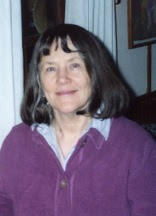 Convener, Interfaith Contemplative Order of Sarada
Convener, Interfaith Contemplative Order of Sarada
I am sad to hear of the passing, in November, of one of my greatest supporters and mentors in the interfaith work of the Interfaith Contemplative Order of Sarada—and also, one of my dearest and most loved friends, Beatrice Bruteau. For many years, Beatrice encouraged me to continue with the interfaith work, even as it encountered resistance in a divided world. She watched as I shaped the vision for the interfaith order; she helped me carry that vision. Her support was unflagging. How can I express my gratitude?
Beatrice was many things to many people. Her influence on me as a Christian Vedantist was profound; her example to me as a spiritual woman was singular. From Beatrice and her gentle mystical presence and broad understanding, I learned “both/and”, which has shaped my life, my work and my own humble attempts to suggest the unity beyond the polarities and dualisms of life in this world. I am sad at the loss of her in this world, but joyously happy to feel her complete Oneness with this world and the next, as she passes from us in the physical form. Thank you, dearest Beatrice!
Tribute by Uma Majmudar
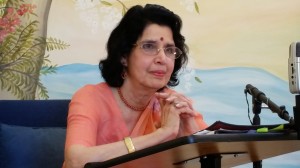 Gandhi scholar, writer and lecturer. Author of Gandhi’s Pilgrimage of Faith: From Darkness to Light.
Gandhi scholar, writer and lecturer. Author of Gandhi’s Pilgrimage of Faith: From Darkness to Light.
My Shraddhanjali (Faith-Tribute) to Beatrice Bruteau
Like many who knew Beatrice Bruteau, I am deeply shocked and saddened by the news of her physical departure from this earthly plane. Yet, as my heart grieves, my mind is flooded with warm memories of my very first meeting with her in the mid-80s and of connecting with her since then at a deeper intellectual-spiritual level. I consider myself mightily blessed to have known her over the last thirty years, and I gratefully include myself as one of her intellectual/spiritual pupils as well as admirers.
I first met Beatrice through Swami Yogeshanandaji, who invited her to speak at one of our Vedanta Retreats (near Atlanta). Beatrice spoke on her recently published book, The Psychic Grid. Since then we began to come closer as thinkers, writers, and as co-pilgrims in search of Truth. My husband and I also became lifelong friends of Beatrice and Jim. From time to time, Beatrice and I wrote letters to each other and discussed ideas and book subjects over the phone, especially subjects that related to the East-West spiritual connection. I eagerly looked forward to receiving and reading all her publications, from The Roll and Contemplative Review to her articles in American Vedantist.
It was also through Beatrice that I was first introduced over the phone to John Schlenck, Coordinating Editor of American Vedantist, in whom I found another good, scholarly friend. Since that first exchange of ideas with John, I also began to contribute occasional articles to American Vedantist magazine, which has now gone digital.
Beatrice was like my older sister, much wiser, much more learned, a perfect scholar, a bold thinker and a great writing mentor. It was Beatrice who not only encouraged me to write my first book on Gandhi, but literally coached me over the phone about how to and what to write in my first proposal letter to the would-be publisher. She was my literary guiding light; kindly and gently, she led me onto the path of writing and publishing. Beatrice also reviewed for American Vedantist my book titled Gandhi’s Pilgrimage of Faith: From Darkness to Light (SUNY, 2005). Our phone conversations and exchange of letters continued until 2013, and when I did not get response to my letters since last year (2013), I had a dreadful suspicion that she might not be well. Next came the sad news of her physical demise! With a deep hole in my heart, as I acknowledge the absence of her physical presence, I also express my deep gratitude to her great spirit! Good-bye, my revered Guru, my dear friend, and my scholarly-spiritual role model!
Coordinating Editor, American Vedantist; music director and occasional lecturer, Vedanta Center of Atlanta
Beatrice had already come and gone at the Vedanta Society of New York when I first came there in 1958. I heard about her from friends there. She had studied with Swami Pavitrananda, my teacher, for several years in the early ‘50s. Before coming to America, he had lived for many years at a monastery in the Himalayas that prohibited any ritual worship.
Among other things I heard about Beatrice at that time was that she had been married to Fred Burkle (Berkel?). After Fred converted to Catholicism, they both planned to become monastics and arranged to have their marriage annulled by the Church. In the end, neither became a monastic.
In 1964 my mother and I stayed at the guesthouse of the Santa Barbara branch of the Vedanta Society of Southern California. After Beatrice got her doctorate at Fordham University— I’m not sure how much after —she went to California. The caretaker of the guest house told us that Beatrice, on visiting the Santa Barbara Temple, was deeply moved by the ritual worship performed by the nuns there. She had missed that at our Center in New York. (Swami Pavitrananda was non-ritualistic by nature.) Beatrice was drawn to the philosophy of Sri Aurobindo, and one of her early books was Worthy is the World: The Hindu Philosophy of Sri Aurobindo, published in 1971. She had an ongoing connection with the Blue Mountain Meditation Center founded by Eknath Easwaran, in Tomales, California, and may have lived there for some time.
If I recall accurately, I first met Beatrice when she came to our Center in New York some time in the 60s or 70s to buy books. At that time we did not have much interchange. The second time was at the Parliament of the World’s Religions in Chicago in 1993, the centenary of the original Parliament of Religions where Swami Vivekananda spoke and became famous. There were a number of Vedanta devotees at the second Parliament, some of whom were interested in developing a more culturally Western form of Vedanta. An informal magazine had been started the previous year —Vedanta Free Press. One morning a group of about 20 had an informal meeting in the hotel room where my friend Erik Johns and I were staying. (The Palmer Hilton has large rooms). This was the second time I met Beatrice, though I don’t recall our having one-on-one conversation.
From time to time over the years I had heard of her and her work. I knew that her interest in Vedanta was ongoing. (She later said to me, “I didn’t leave Vedanta; I took it with me.”) She subscribed to Vedanta Free Press, of which I became Coordinating Editor a year or so after it was begun in 1992. Beatrice and I had some correspondence in connection with that. In 1995, the editors of Vedanta Free Press decided to publish a more serious journal. VFP had been something of a gripe forum. I called Beatrice and asked her to serve on the editorial board of the new journal. She immediately agreed and helped me select the name: American Vedantist.
I had had minimal editorial experience and was simply motivated by my interest in expressing Vedanta through Western culture. Beatrice and I had many telephone conversations, discussing editorials, articles and the magazine as a whole. Invariably, whatever I wrote was made better by her input. She wrote several editorials herself, and we did some jointly. She also contributed a number of articles.
The only other time we met in person was at a weekend working retreat at an unaffiliated Vedanta retreat center in Greenville, New York in 1997 or 1998. She and her husband Jim drove up for it from their home in North Carolina. The invitees to the retreat were members of non-affiliated but Ramakrishna-Vivekananda oriented Vedanta groups. I got to know Beatrice better, and was glad to meet Jim, who also contributed a few articles to American Vedantist. But my friendship with Beatrice occurred mostly over the telephone. She was resistant to e-mail, but this contributed to a more intimate friendship by telephone.
My health had deteriorated by 2007, and a new editor took over. He didn’t know Beatrice, and so her connection to the magazine lapsed. I am sorry now that I didn’t make more of an effort to keep in touch with her. My health rebounded and I resumed the editorship in 2011. A friend sent me the link to Cynthia Bourgeault’s lovely tribute to Beatrice. It was only then that I knew she had passed away.

